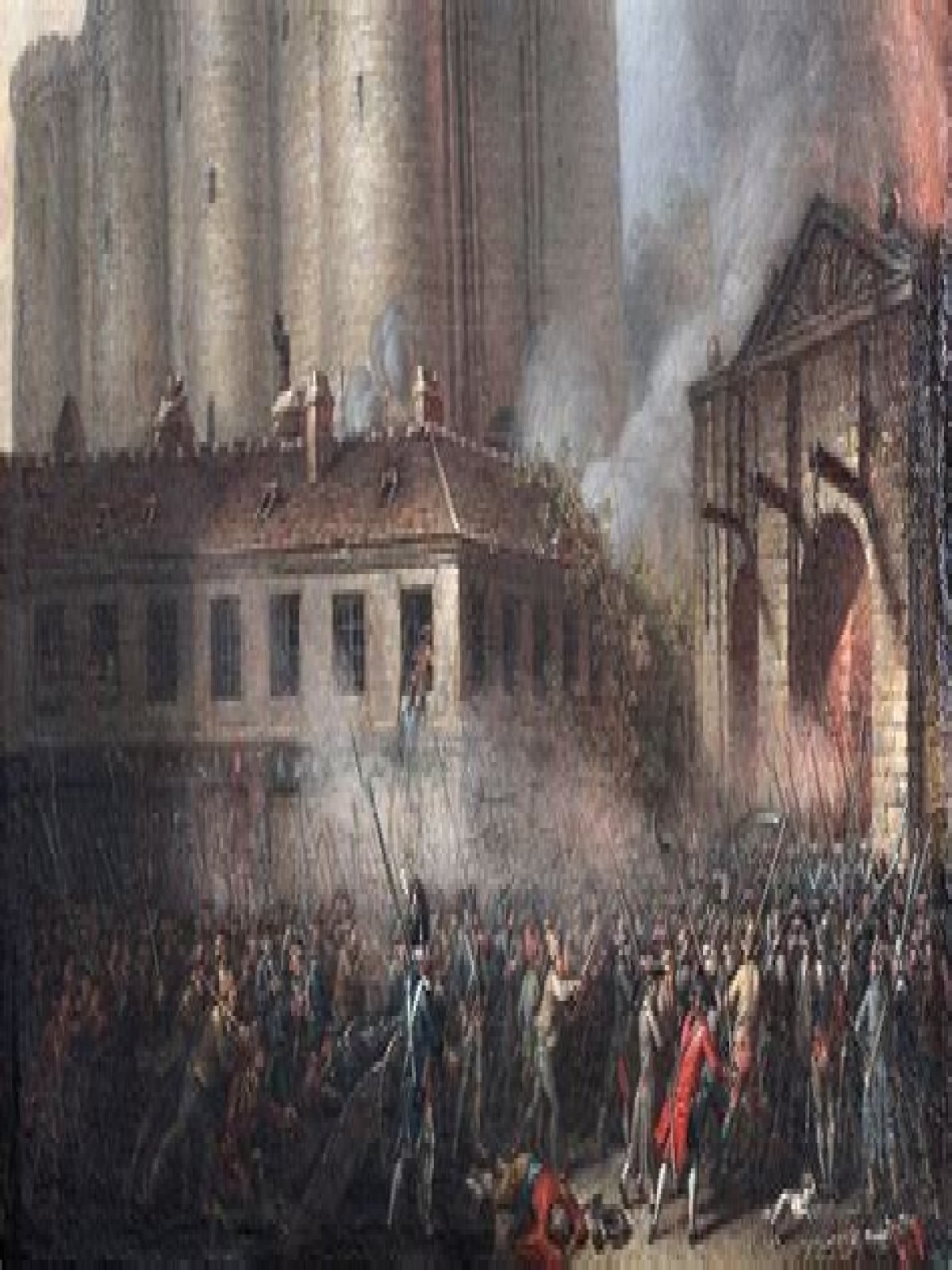- What happened at the Bastille on July 14 1789 and why did it happen?
- Who was held prisoner in the Bastille?
- What did the Bastille symbolize?
- Why did people storm the Bastille?
- What caused the fall of the Bastille?
- Why was the Bastille hated by all?
- ¿Cuál fue la causa de la toma de la Bastilla?
- ¿Quién fue el último gobernador de la Bastilla?
What happened at the Bastille on July 14 1789 and why did it happen?
On 14 July 1789, a state prison on the east side of Paris, known as the Bastille, was attacked by an angry and aggressive mob. When the prison governor refused to comply, the mob charged and, after a violent battle, eventually took hold of the building.
Who was held prisoner in the Bastille?
A prisoner named Eustache Dauger was held in the Bastille and became the inspiration for Alexandre Dumas’s book, The Man in the Iron Mask.
Who was the leader of the storming of the Bastille and what happened to him?
Bernard René Jourdan, marquis de Launay (8/9 April 1740 – 14 July 1789) was the French governor of the Bastille. He was the son of a previous governor, and commander of the Bastille’s garrison when the prison-fortress in Paris was stormed on 14 July 1789.
What did the Bastille symbolize?
The Bastille, stormed by an armed mob of Parisians in the opening days of the French Revolution, was a symbol of the despotism of the ruling Bourbon monarchy and held an important place in the ideology of the Revolution. Storming of the Bastille, July 14, 1789.
Why did people storm the Bastille?
Why did they storm the Bastille? The Third Estate had recently made demands of the king and had demanded that the commoners have more of a say in government. The Bastille was rumored to be full of political prisoners and was a symbol to many of the oppression of the king.
How many prisoners were released when the Bastille was stormed?
Launay and his men were taken into custody, the Bastille’s gunpowder and cannons were seized, and the seven prisoners were freed.
What caused the fall of the Bastille?
The main reason why the rebel Parisians stormed the Bastille was not to free any prisoners but to get ammunition and arms. At the time, over 30,000 pounds of gunpowder was stored at the Bastille. But to them, it was also a symbol of the monarchy’s tyranny.
Why was the Bastille hated by all?
Bastille was hated by all, because it stood for the despotic power of the king. The fortress was demolished and its stone fragments were sold in the markets to all those who wished to keep a souvenir of its destruction.
¿Quién fue el rey de Francia durante la toma de la Bastilla?
Luis XVI (1754 – 1793): rey de Francia durante la toma de la Bastilla, quien en reiteradas ocasiones intentó aplicar políticas de impuestos a favor de la nobleza y las clases altas del país, lo cual provocó un gran descontento.
¿Cuál fue la causa de la toma de la Bastilla?
Representación de la toma de la Bastilla por Charles Thévenin, 1793. Las causas más importantes que provocaron la toma de la Bastilla fueron las siguientes: Para ese entonces, la Bastilla alojaba como prisioneros a grandes pensadores de la revolución de Francia, lo cual impulsó a los revolucionarios a llevar a cabo la toma.
¿Quién fue el último gobernador de la Bastilla?
Bernard-René Jordan de Launay (1740 – 1789): último gobernador de la Bastilla, quien murió durante la toma. Pierre-Augustin Hulin (1758 – 1841): soldado francés que cumplió un rol importante durante la toma de la Bastilla y los principales acontecimientos de la revolución.
¿Qué fue la rendición de la Bastilla?
La rendición de la prisión, símbolo del despotismo de la monarquía francesa, provocó un auténtico seísmo social tanto en Francia como en el resto de Europa, llegando sus ecos hasta la lejana Rusia . Fortaleza del secreto, y lugar sin justicia, la Bastilla fue la primera cita de la Revolución.
